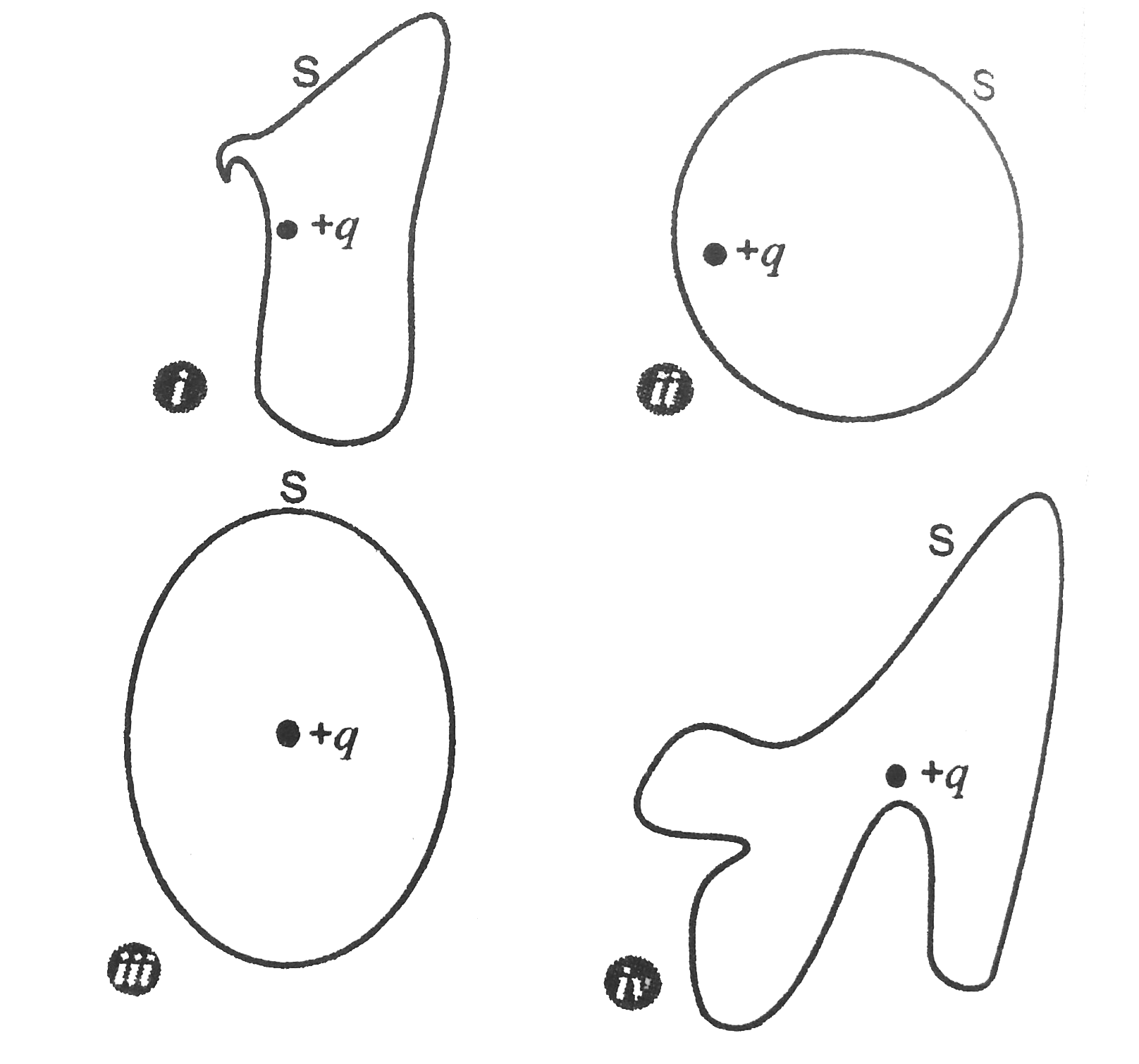A : If electric flux over a closed surface is negative then the surface encloses net negative charge.
R : Electric flux is independent of the charge distribution inside the surface.
A.If both Assertion & Reason are true and the reason is the correct explanation of the assertion, then mark (1).
B.If both Assertion & Reason are true but the reason is not the correct explanation of the assertion, then mark (2).
C.If Assertion is true statement but Reason is false, then mark (3).
D.If both Assertion and Reason are false statements, then mark (4).
The correct Answer is:B
To solve the given question, we need to analyze both the assertion (A) and the reason (R) provided.
1. Understanding the Assertion (A):
- The assertion states that if the electric flux over a closed surface is negative, then the surface encloses a net negative charge.
- According to Gauss's Law, the electric flux (Φ) through a closed surface is given by:
Φ=Qencϵ0
where Qenc is the net charge enclosed by the surface and ϵ0 is the permittivity of free space.
2. Analyzing the Assertion:
- If the electric flux is negative (Φ<0), it implies:
Qencϵ0<0
- Since ϵ0 is a positive constant, this means:
Qenc<0
- Therefore, the assertion is correct: a negative electric flux indicates that the enclosed charge is negative.
3. Understanding the Reason (R):
- The reason states that electric flux is independent of the charge distribution inside the surface.
- This means that regardless of how the charges are arranged inside the closed surface, the total electric flux depends only on the net charge enclosed.
4. Analyzing the Reason:
- We can change the positions of charges inside the surface without affecting the total enclosed charge. Thus, the electric flux remains the same.
- This confirms that the reason is also correct.
5. Determining the Relationship Between A and R:
- While both the assertion and reason are correct, the reason does not provide a direct explanation for the assertion. The assertion specifically relates to the sign of the flux and the charge enclosed, while the reason discusses the independence of charge distribution.
6. Conclusion:
- Since both the assertion and reason are true, but the reason is not the correct explanation of the assertion, the correct answer is that both A and R are true, but R is not the correct explanation of A.
Final Answer:
- Both assertion (A) and reason (R) are true, but R is not the correct explanation of A.
- The assertion states that if the electric flux over a closed surface is negative, then the surface encloses a net negative charge.
- According to Gauss's Law, the electric flux (Φ) through a closed surface is given by:
Φ=Qencϵ0
where Qenc is the net charge enclosed by the surface and ϵ0 is the permittivity of free space.
- If the electric flux is negative (Φ<0), it implies:
Qencϵ0<0
- Since ϵ0 is a positive constant, this means:
Qenc<0
- Therefore, the assertion is correct: a negative electric flux indicates that the enclosed charge is negative.
- The reason states that electric flux is independent of the charge distribution inside the surface.
- This means that regardless of how the charges are arranged inside the closed surface, the total electric flux depends only on the net charge enclosed.
- We can change the positions of charges inside the surface without affecting the total enclosed charge. Thus, the electric flux remains the same.
- This confirms that the reason is also correct.
- While both the assertion and reason are correct, the reason does not provide a direct explanation for the assertion. The assertion specifically relates to the sign of the flux and the charge enclosed, while the reason discusses the independence of charge distribution.
- Since both the assertion and reason are true, but the reason is not the correct explanation of the assertion, the correct answer is that both A and R are true, but R is not the correct explanation of A.
- Both assertion (A) and reason (R) are true, but R is not the correct explanation of A.
Similar Questions
Electric flux over a surface in an electric field
View SolutionSTATEMENT -1 : If ∮→E.¯¯¯¯ds over a closed surface is negative,it means the surface encloses a net negative charge.
STATEMENT-2 : We may have a Gaussian surface in which three lines enter and five field lines are coming out.
STATEMENT-3 : The quantity ∮→E.¯¯¯¯ds is independent of the charge distribution inside the surface.
View SolutionA surface encloses an electric dipole. The electric flux through the surface is
View SolutionIf the flux of the electric field through a closed surface is zero,
View SolutionElectric flux through a spherical surface shown in the figure is
 _______
_______
View SolutionAcross the surface of a charged conductor, the electric
View SolutionAn arbitrary surface encloses a dipole. What is the electric flux through this surface ?
View SolutionThe electric flux through the surface

View SolutionThe electric flux through the surface

View SolutionThe electric flux through the surface

View Solution
